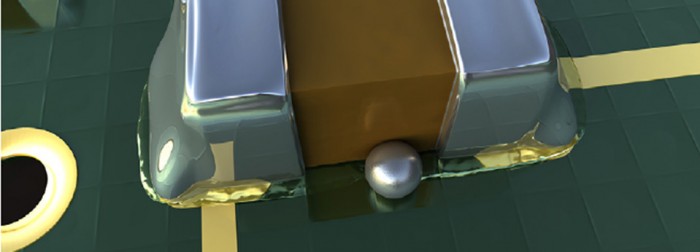Folks,
Answers to the quiz of a few weeks back……
Phil and Rob had agreed to ask the GM if it was OK to ask the tech and engineers at some of their subcontractors to take the test anonymously. Over a period of two months Phil and Rob got 52 people to agree, almost all of them after Phil or Rob agreed to take them to lunch. They asked Patty to grade the “exams.” Today Patty would reveal the results.
“Phil, this is one of the best bets I have ever made,” teased Rob.
Everyone at the lunch table chuckled, but the look on Phil’s face said he expected to lose. Rob has said that he thought the average score would be less than 70%, Phil insisted that it would be greater than 85%. In asking the different folks to take the test, invariably Phil started asking questions not on the test. He was surprised that no one knew what tin pest was. He even asked how to time balance a chip shooter and flexible placer, only one in twenty knew.
As Patty approached the lunch table, the ensemble held their breath.
“OK, Patty, tell us the bad news,” Phil said in a resigned tone.
“Rob wins, the average score was 58%,” Patty said getting to the point. “Here are the answers and percentages on each problem,” she went on:
1.What is the composition of SAC305?
96.5% tin, 3.0% silver, 0.5% copper. 60% got this right.
2.What are tin whiskers?
Tin whiskers are metal whiskers that can “grow” from tin plating on component leads. They are mitigated by 2% bismuth in the tin, a nickel overplate of the lead copper, a matte tin finish, and a few other mitigation approaches. 40%.
3.In a stencil aperture, what is the area ratio?
The ratio of the area of the aperture opening divided by the area of the side walls. This ratio is typically used for circular and square apertures. It is equal to D/4t, where D is the diameter of square side and t is the stencil thickness. 40%
4.What is an approximate peak temperature for a reflow oven in lead-free assembly?
Any answer 235 to 250C accepted. 90%
5.A board is inspected after wave soldering and one lead is not soldered to the board. The board is run through the wave solder machine again and has the same defect on the same lead. What is the most likely cause of the defect?
a.The solder temperature is too low.
b.The pad on the board is oxidized.
c.The preheat temperature is too high.
b 70%
6.What are local fiducials on a PWB for?
Local fiducials are located near the pads of a component with fine lead spacings to assure accurate placement. 70%
7.What does “thixotropic” mean in regard to solder pastes?
The viscosity decreases with increasing shear stress. Hence, during printing the viscosity drops as the paste is forced through the aperture, aiding good aperture fill. It increases as the printed deposit rests, minimizing slump. 20%
8.A chip shooter places passives at a rate of 36,000 per hour. It is placing 300 passives on a PWB, how many seconds will the chipshooter take to place the passives on one board?
300/36000 = 1/120 hr = 30 seconds. 90%
9.A reflow oven belt speed is 100 cm/min. The PWB is 40 cm long. What is the minimum cycle time that the oven can support?
The amount of time that the belt needs to cover 40 cm is 40/100 = 0.4 minutes = 24 seconds. This is the minimum cycle time the oven can support. 40%
10.What is “tombstoning”?
Tombstoning is observed when a passive component’s terminations experience unequal wetting forces which are strong enough to lift one end of the passive so that it looks like a tombstone. 60%
Overall average score 58%.
“Wait a minute Patty, your answers are too demanding,” Phil shouted.
“Calm down Phil, I gave full credit for anything close,” Patty responded.
In unison, almost everyone at the table sighed “Yikes.”
Patty interjected, “One person who received a 70% commented after completing problem 9, ‘I didn’t think I would need a PhD in math to do this quiz.’ “
All agreed that organizations like the SMTA and IPC were more needed than ever.
Cheers,
Dr. Ron


